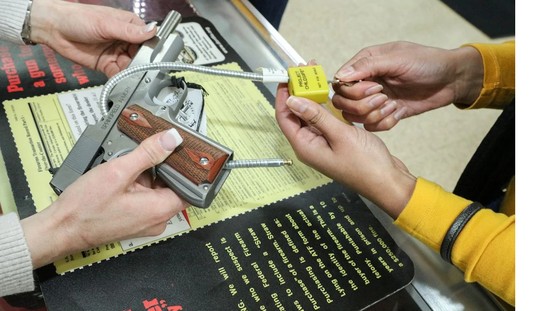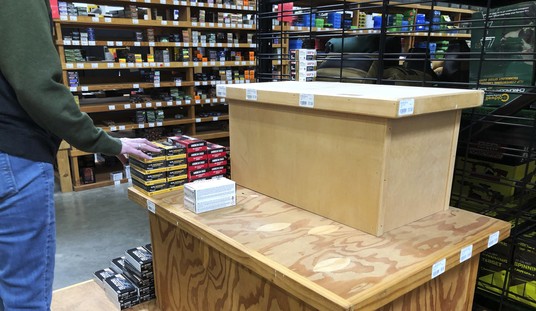I think it’s a bit of an understatement to note that many Americans on the political left are not taking Donald Trump’s victory in the 2016 Presidential race very well.
We’ve seen rioting and arson and violence from the more radical elements (many of whom, ironically, did not vote), and a combination of anger, denial, and fear from many others, who are seeing reports of rampant hate crimes being uncritically reported (despite most of them being unproven, or later proven false).
This has led to the interesting situation of many progressives who had cheered on Hillary and her radical anti-gun campaign now determining that they’re not so anti-gun anymore. Instead, they’ve been motivated by fear to buy guns for self-defense.
A number of liberal gun groups are picking up on this, as are some conservatives and libertarians such as author and firearms instructor Larry Correia, who recently penned A Handy Guide For Liberals Who Are Suddenly Interested In Gun Ownership, which begins:
That title isn’t joking. This post is aimed at my liberal readers. I’m a libertarian leaning Republican and gun expert, who thinks you are wrong about a lot of stuff, but I’m not writing this to gloat about your loss. For the record, I disliked all the presidential candidates.
Judging by your social media over the last few days many liberals have been utterly terrified that your government might turn tyrannical or that evil people will now be emboldened to hurt you. I’m going to let you in on a little thing the other half of the country is familiar with to keep those unlikely, yet catastrophic, events from happening.
And that my lefty friends, is 2nd Amendment.
Having just gone through a war against a tyrannical government, the Founders understood that governments can go bad, so they made sure to note our God given right (or we’ll say naturally occurring right, since a bunch of you are atheists) to keep and bear arms in order to defend ourselves. The 2nd Amendment isn’t about hunting or “sporting purposes”, it’s about having weapons that you can fight with. As an added bonus, being able to protect yourself from a tyrannical government means that you’re a lot better equipped to deal with any common criminal who decides to hurt you.
Before I get into the details about how to enjoy your newly discovered 2nd Amendment rights, let me just say that I get you’re sad, angry, bitter, and fearful. But just like my people over the last few elections, you’ll get over it. The really hyperbolic freak outs about Literally Hitler make you sound just like the Alex Jones crowd worried that Obama was going to herd Christians into FEMA camps last time. So take a deep breath and relax. Your friends and neighbors are the same as they were last week. The vast majority weren’t voting because racism, they voted against the status quo and a really unlikable Democrat. And no, they aren’t going to round you up into cattle cars.
But in the off chance they do, let’s get you prepared!
Correia’s piece—as cutting as it is for liberals who have “flipped the script” on their views of gun ownership—is full of sound advice touching the surface of:
- What guns are for
- how self defense works (from a legal use of force perspective)
- how guns work
- how gun laws work (warning: he roasts anti-gun liberals who created laws that make the path to ownership onerous and expensive in many parts of the country)
- how to buy a gun
- advises you to train
- explains what the Second Amendment is really about
One thing he doesn’t delve into is which guns that new liberal gun owners may want to consider.
Why? I dunno. You’d have to ask him. I suspect that the answer would be something along the lines of how selecting a firearm is a very personal choice, that everyone is different, etc. That’s a perfectly reasonable response, as well.
But that kind of leaves you hanging, doesn’t it?
If you are truly, hopelessly lost and don’t have the first foggy idea about which firearm (or firearms) you may want to start out with for self defense, a little guidance may be in order.
My very first bit of advice for perspective gun owners (liberal or otherwise) is it make a trip to your local range. Talk to the staff about your desire to own a firearm for self-defense, explain your level of experience, and ask what classes they would recommend. You can find a solid list of beginner-level classes offered by the National Rifle Association. Believe it or not, the NRA’s primary focus isn’t politics, but firearms training. They’re responsible for the bulk of entry-level civilian firearms training in the country, and much of the law enforcement training as well. Both the “Basics” and “FIRST Steps” courses are good, as are the two Personal Protection courses and Defensive Pistol.
Now, let’s get down to the guns.
We’re going to make these recommendations based upon a number of assumptions. These assumptions are:
- You’re probably not very experienced with firearms.
- You may be intimidated by/scared of firearms.
- Because of 1 & 2, it’s probably best to ease you into gun ownership, and direct you to firearms that are relatively low-recoiling (they have little “kick”) and are relatively simple to operate.
1. A .22 LR handgun

I’ve worked with several new shooters who were literally shaking with fear the first time they went to a gun range. If you’re already that fearful your senses are going to be heightened, and even the relatively moderate recoil and noise of your average defensive handgun is going to be a huge turn off. For that reason, I’d suggest a double-action .22LR revolver or pistol as your first gun, with a nod to the double-action revolvers of Ruger or Smith & Wesson.
Why?
.22LR ammunition is relatively inexpensive, relatively quiet, and very low recoiling. Double-action revolvers are harder to learn to shoot thanks to the longer and heavier trigger pull, but they tend to be much less frustrating than most .22 semi-automatic pistols, which have a reputation for being jam prone if you don’t find just the right ammunition for them.
The gun pictured above is the Ruger SP101, Model 5765, an eight-shot .22 LR revolver that should be legal to own pretty much everywhere in the country. They are rugged, reliable, good looking, and are simple to operate. While I must also note that .22LR bullets are not considered to be a good choice for self-defense by self-defense experts due to their limited wounding capability, they are still an effective psychological deterrent, can indeed cause fatal wounds if fired accurately, and they beat throwing rocks.
A .22 LR Rifle

In some jurisdictions, handgun permits are very difficult if not almost impossible to obtain, thanks to the policies pushed by anti-gun liberals. There are also people who simply do not want to learn to shoot a handgun, or who feel more confident with rifles. Still addressing the problem of an aversion to recoil and noise, I feel confident in recommending the Marlin 795 semi-automatic rifle, for several reasons one of those being it’s price-point. While much longer and larger than the Ruger SP101 recommendation, the Marlin 795 can typically be had for less than $200. It’s soft-shooting, maintenance is minimal, is legal in most jurisdictions, and unlike .22LR pistols, doesn’t tend to be super-sensitive to ammunition. The Marlin 795 is also one of the two most common rifles you’ll find at Project Appleseed events, a relatively low cost weekend training option for rifle shooting in many parts of the country that will also appeal to history buffs.
A Soft-Shooting Shotgun

Both the Ruger SP101 revolver and the Marlin 795 offer a combination of low-recoil and controllability, but the .22 LR just isn’t that good of a defensive round. If you’re looking for a home-defense firearm that is still low-recoiling and easy to control, you may want to consider a .410 shotgun such as the Mossberg HS410, which was built for that express purpose. When loaded with .410 buckshot, it delivers a payload on par with that of heavy handgun rounds in a much more controllable package, and the pump-action is relatively simple to learn. Larger pump-action shotguns in 20-gauge and 12-gauge are the choice of most professionals for self-defense, but they also require more training to mitigate recoil that is often punishing. That is not a significant problem with a .410 bore shotgun.
An AR-15

Nope, not kidding.
While it has been vilified by many on the left as a “weapon of war,” the AR-15 is easily configurable to a wide range of people with different skill levels, sizes, and abilities. It’s only a little more complicated to learn than other firearms, and offers reasonable power with very light recoil (though being a centerfire rifle, it is admittedly a bit louder than the .22 LR selections with much less propellant. The Daniel Defense V11 pictured above is a solid choice in a large market for this kind of rifle.
The downsides?
AR-15s are more expensive than the other guns mentioned thus far, ranging in price from $600 to more than $2000. It make be restricted or banned in many configurations depending on where you live.
They’re also incredibly fun to shoot and addictive, so you may have to pick up more shifts a the collective to buy more ammo.
If you happen to live in one of the silly places that AR-15s are banned, you may be able to get buy with a Ruger Ranch Rifle, which offers many of the advantages of an AR-15, but has slipped through the cracks of gun banners because the wood stock doesn’t make it look as scary.
An actual fighting handgun

It may take some getting used to, but it’s hard to argue against a quality 9mm pistol as a solid first and last choice as a defensive handgun. The Glock 19 9mm pictured above is ubiquitous, used by military and law enforcement agencies worldwide, home defenders, concealed carriers, and sports shooters. It’s easy to find, parts and accessories are everywhere, and it’s relatively sort-shooting, reliable, and 9mm FMJ ammunition is relatively inexpensive, while high end self-defense ammunition in the caliber is every bit as a effective as heavier, larger caliber bullets if you have to use it to defend yourself. There are dozens of companies making good 9mm semi-automatics, and you shoot expect to pay somewhere in the $500-$700 range for a good one.
Let me be clear in pointing out that this is not by any means an exhaustive list.
This is simply a short list of firearms that can help new shooters with certain concerns and common new-shooter hangups. It’s a conversation starter… so what say you?








Join the conversation as a VIP Member